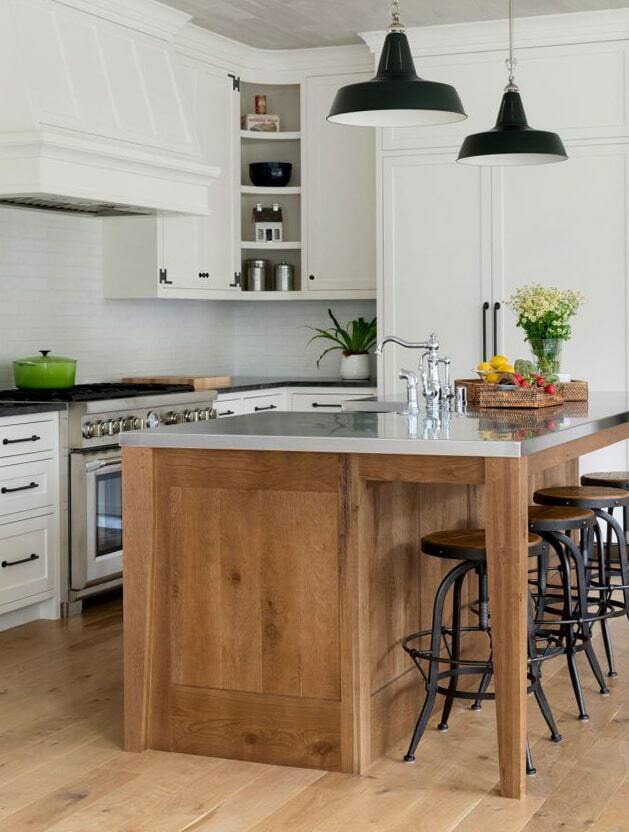The Best Kitchen Island Leg Options for Modern and Traditional Kitchens
The Best Kitchen Island Leg Options for Modern and Traditional Kitchens
Blog Article
The Importance of a Sturdy Cooking Area Island Leg in Developing a Functional Food Preparation Area
A strong kitchen area island leg acts as a basic part in developing a functional cooking setting, giving required support for both the counter top and various cooking area tasks. The stability it offers can significantly reduce the risk of crashes in high-traffic locations, while likewise adding to the overall visual coherence of the room. As cooking areas develop right into multifunctional locations for cooking, eating, and socializing, the selection of products and design considerations for island legs ends up being significantly crucial. Comprehending these elements can transform your kitchen right into a much safer and more efficient location, triggering additional exploration right into the most effective alternatives available.
Benefits of Sturdy Island Legs
Giving crucial support, durable kitchen area island legs play a crucial duty in improving the capability and toughness of kitchen area islands - kitchen island leg. These legs not just bear the weight of the counter top and any kind of additional products positioned on the island, but likewise add to the general security of the structure. A well-supported cooking area island ensures that it stays upright and practical, also under heavy usage, which is especially important in active kitchen settings
Furthermore, sturdy island legs can improve the aesthetic charm of the cooking area. They give a solid framework that can complement numerous design styles, from contemporary to standard. This versatility enables home owners to personalize their cooking area islands according to individual preference while making certain that the architectural stability remains uncompromised.
Along with their supportive function, robust kitchen area island legs can likewise improve safety and security. A steady island decreases the risk of accidents brought on by tipping or tottering, which is specifically critical in houses with kids or elderly individuals. Strong legs can help with a smooth circulation of tasks, allowing for efficient dish preparation and social interactions within the kitchen area area. Inevitably, purchasing sturdy kitchen island legs is vital for a useful and aesthetically pleasing cooking location.
Products for Cooking Area Island Legs
When picking materials for kitchen area island legs, toughness and aesthetic appeal are essential elements to consider. One of the most usual materials include wood, metal, and engineered wood, each offering distinct advantages.
Hardwood, such as cherry, maple, or oak, is a classic choice as a result of its strength and ageless elegance (kitchen island leg). It can withstand substantial weight and is resistant to use, making it ideal for high-use kitchen atmospheres. In addition, hardwood can be tarnished or repainted to complement different kitchen designs
Steel legs, frequently crafted from stainless steel or functioned iron, provide a contemporary and industrial look. They are incredibly solid and can support significant tons while being resistant to dampness and warmth, which is advantageous in a cooking area. Metal legs can likewise be conveniently cleaned, boosting their usefulness.

Layout Factors To Consider for Security
The choice of materials for kitchen island legs directly affects the design factors to consider for stability. When developing a kitchen area island, it is extremely important to examine the weight-bearing ability of the picked products. Heavier materials, such as solid timber or steel, usually supply greater security, especially under the anxiety of day-to-day use.
In addition, the best site leg design have to incorporate correct geometry to improve stability. A wider base boosts the support location, minimizing the danger of tipping or tottering. Consideration ought to likewise be offered to the height of the legs; disproportionate leg lengths can lead to inequality, jeopardizing the general security of the island.
In addition, the circulation of weight across the island is crucial. Ensuring that the leg placement aligns with the heaviest elements, such as counter tops and appliances, will certainly additionally boost security.
Maintenance Tips for Long Life

Depending on the material of the legs-- whether timber, metal, or composite-- proper cleansing techniques ought to be used. Steel legs might call for a light polish to protect against corrosion and keep their gloss.
If the cooking area island experiences heavy usage, take into consideration enhancing the legs with added brackets or supports to boost sturdiness. By following these upkeep pointers, site here property owners can ensure their kitchen island legs remain robust and functional for years to come.
Choosing the Right Leg Design
Normal upkeep guarantees that cooking area island legs remain useful and tough, however choosing the ideal leg style is equally vital for both looks and assistance. The option of leg design can significantly influence the overall layout and consistency Look At This of your kitchen area.

Functionality is an additional important aspect. For instance, thicker legs or those with a strong base can support heavier kitchen counters and tools, enhancing the island's utility. Alternatively, slim legs may create an airy look, suitable for lighter designs yet potentially much less supportive.
Final Thought
In recap, the value of durable kitchen area island legs can not be overstated in the development of a useful food preparation area. These legs give crucial assistance, improve security, and contribute to the total aesthetic of the cooking area.
A tough cooking area island leg offers as an essential part in developing a functional food preparation environment, supplying required assistance for both the countertop and numerous kitchen area activities.Supplying vital support, durable kitchen island legs play a critical duty in boosting the functionality and longevity of kitchen islands. Ultimately, spending in strong kitchen area island legs is important for a useful and aesthetically pleasing cooking area.
Consideration must likewise be offered to the elevation of the legs; disproportionate leg sizes can lead to inequality, endangering the overall security of the island.
Wood legs provide heat and a timeless appearance, while metal legs offer a contemporary and commercial feeling.
Report this page